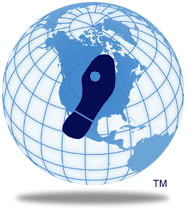CSI Atlanta: Foodborne Outbreak
Posted December 1, 2008 by Ali S. Khan

During the recent investigation of the outbreak of Salmonella Saintpaul, CDC often mentioned that the overall "outbreak investigation is complex and difficult." This complexity and difficulty extends to the hundreds of outbreaks that never make national headlines as local public health officials trace outbreaks to specific venues and food items. CDC assists local public health officials to investigate about 100 multi-state clusters or confirmed foodborne outbreaks each year; many of which never lead to a specific implicated food item; approximately 10 that are particularly large, complex or extended become formal Epi-AID investigations. The use of a fingerprinting system for disease agents has greatly enhanced our ability to detect outbreaks but increases the effort to review suspicious clusters. For example, we now get over 60,000 patterns added to the database each year. This week, CDC’s OutbreakNet Team is evaluating 35 different clusters to determine their significance. This includes an investigation of an outbreak of Salmonella Poona with the same fingerprint pattern.
Since July, 207 sick people in 32 states and 31 in Canada have been connected. The illnesses have resulted in 38 hospitalizations and one death. CDC, State, and local health departments continue to conduct detailed interviews of people who have become sick and compare them to similar people who are not. More than 20 detailed, open-ended interviews have been conducted, and more than 80 case-patients have been interviewed. Statistical analysis of this type of data often gives us a lead on what could be causing the illnesses, but not always. CDC’s OutbreakNet Team has also convened a brainstorming session to include in-house experts as well as authorities from FDA, food scientists from the University of Georgia, and epidemiologists from several state health departments. Two of our Epidemiology Intelligence Service (EIS) Officers, or disease detectives, were also sent to Great Falls, MT to assist the Montana Department of Public Health and Human Services and the Cascade City/County Health Department. Overall, more than 250 interviews have been completed as part of two separate studies. The team continues to do interviews and analyze the data in an effort to resolve this complex and difficult outbreak.
Comments
No comments posted.
Disclaimer: The content of Public Health Matters expresses the opinions of its authors and does not necessarily represent the views of the Centers for Disease Control and Prevention.
- Page last reviewed: July 3, 2008
- Page last updated: October 10, 2008
- Content source: National Center for Zoonotic, Vector-Borne, and Enteric Diseases
Get email updates
To receive email updates about this page, enter your email address:
Contact Us:
- Centers for Disease Control and Prevention
1600 Clifton Rd
Atlanta, GA 30333 - 800-CDC-INFO
(800-232-4636)
TTY: (888) 232-6348
24 Hours/Every Day - cdcinfo@cdc.gov


